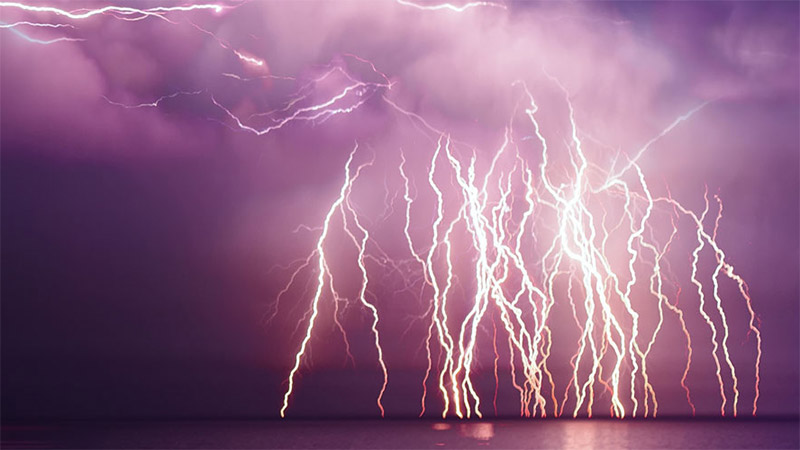Lightning safety for your business
The threat of thunderstorms around your facility provides challenges around keeping personnel and customers safe while also minimizing operational downtime. Getting people out of harm’s way before lightning arrives and returning to business after the lightning threat has ended requires accurate real-time monitoring of the weather surrounding your facility and an understanding of the time it takes to cease and resume operations.
For any facility with outdoor operations, real-time advanced total lightning data from National Lightning Detection Network NLDN or Global Lightning Dataset GLD360 serve as the backbone of a lightning safety plan. Detecting more than 99% of thunderstorms around the world, NLDN and GLD360 can provide thunderstorm alerts everywhere your business operates. Vaisala’s Thunderstorm Manager gives you the fastest automated alerts (within 12 seconds of a lightning threat near your facility, when using NLDN) so you can operate safely for longer.

How do I determine my alert requirements?
Because every business is different, alerting is customizable to meet your needs. However, alerts should be set to enable your personnel to get inside before lightning reaches your facility. For larger facilities or those with more people, an earlier alert may be necessary, while smaller facilities may not need as much time to get everybody to a lightning safe place. Lightning safe places include large, substantial buildings or metal topped vehicles. This can be accomplished by having alerts trigger when lightning is farther away from your facility when you need more warning time, or closer to your facility if you need less warning time.
When is it safe to return to operations?
Any time thunderstorms are in the area, it is unsafe to be outdoors. The use of real-time lightning data allows operators to see how far lightning is from their facility and be a guide to returning to operations. Many current guidelines for lightning safety recommend seeking a lightning safe place when lightning is within 6 - 10 miles (10 - 16 km). Lightning can occur more than 10 miles away from the core of a thunderstorm, so operators should always be aware of any lightning that occurs within their alert area.
Lightning safety plan in place
Any business with outdoor operations should have a lightning safety plan in place. Real-time advanced total lightning data from NLDN or GLD360 should serve as the backbone of the plan, with safety criteria customized to match the requirements of your facility.
Be sure to follow Vaisala blogs this week on uses of lightning data for human safety. Also, please visit the National Weather Service and National Lightning Safety Council websites this week and in the future.




Add new comment